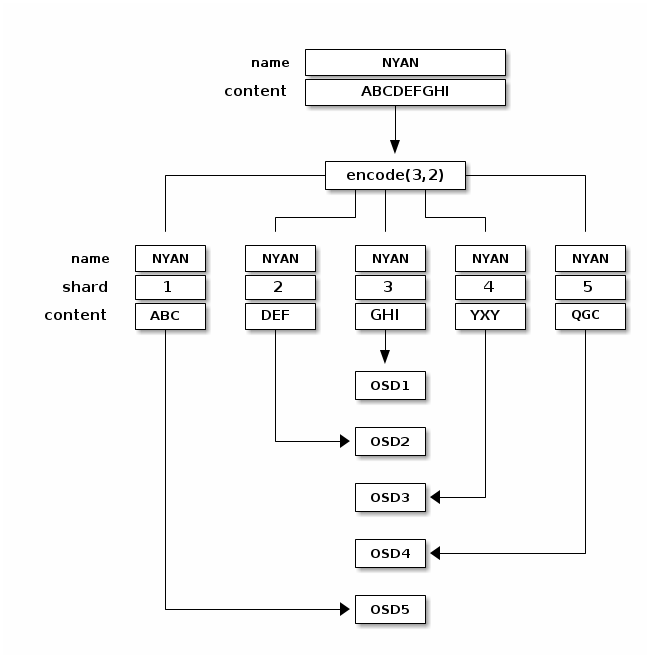이 콘텐츠는 선택한 언어로 제공되지 않습니다.
Chapter 32. Erasure code profiles
The default erasure code profile sustains the loss of a single OSD. It is equivalent to a replicated pool of size two but requires 1.5TB instead of 2TB to store 1TB of data. The default profile can be displayed with:
Choosing the right profile is important because you cannot change the profile after you create the pool. To modify a profile, you must create a new pool with a different profile and migrate the objects from the old pool to the new pool.
The most important parameters of the profile are K, M and ruleset-failure-domain because they define the storage overhead and the data durability. For instance, if the desired architecture must sustain the loss of two racks with a storage overhead of 40% overhead, the following profile can be defined:
The primary OSD will divide the NYAN object in three (K=3) and create two additional chunks (M=2). The value of M defines how many OSDs can be lost simultaneously without losing any data. The ruleset-failure-domain=rack will create a CRUSH ruleset that ensures no two chunks are stored in the same rack.
